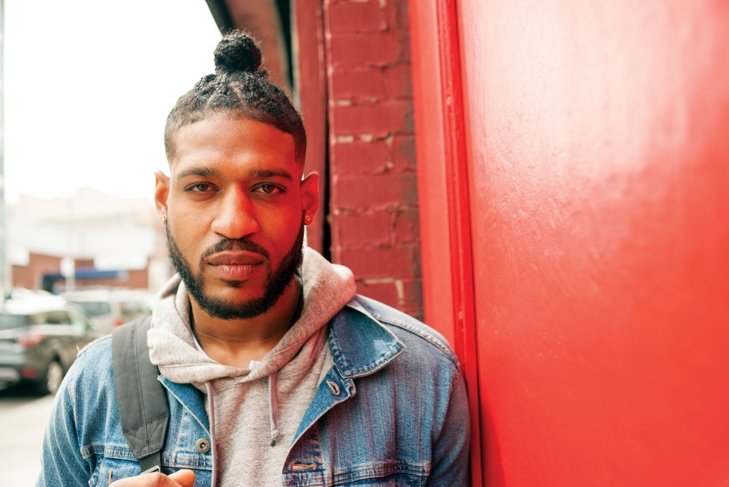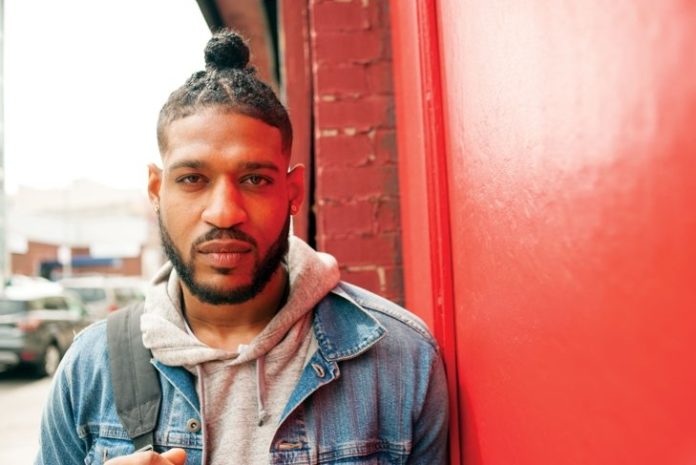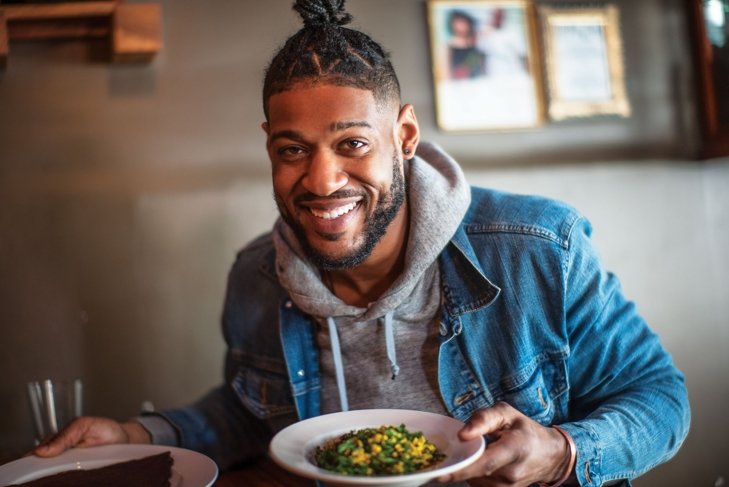
 photos | Anthony Two Moons
photos | Anthony Two Moons
What does a 300-pound football star eat to keep an über-big and heavy physique? For David Carter, a former defensive lineman for the likes of the Dallas Cowboys, the answer was anything and everything he could feed his body after a grueling practice.
This often meant a trip to the drive-thru, where he and a teammate would share eight double-doubles and four orders of fries washed down with a few milkshakes.
Carter says eating like this didn’t faze him. Raised in South Los Angeles, he was the prodigy of a family-owned barbecue restaurant. Meat was his main food staple—he often said he was “allergic to vegetables.”
Not until his health started to decline did he begin to question his diet. He recalls vividly how his body began breaking down. He had a serious case of tendonitis, severe pain, inflammation and high blood pressure, and he required a medley of medications to treat his symptoms.
“Despite being in my 20s, I felt like an old man. I could barely get in and out of a bathtub. I was taking painkillers and anti-inflammatories and felt tired and worn out,” says Carter.
Man on a mission
Today, post-NFL, Carter says he keeps his weight around 250 pounds and does some modeling work on the side. Keeping his weight down, he adds, is extremely easy on a plant-based diet. Does Carter ever miss his burger days? “Not a chance!” he says. “There’s no feeling of deprivation whatsoever.”
In David Carter’s kitchen at all times: Rice, beans, lentils, cashew cheese, nondairy yogurts and lots of spices
Favorite meal: Pretty much anything with rice, legumes and cashew cheese (he calls himself a “cashew cheese-aholic”)
Favorite quote: “The cave you fear to enter holds the treasure you seek.” (Joseph Campbell)
Most admired person: Chris Carter, his brother
The spark that changed everything
Following his curiosity one evening, Carter sat down for a viewing of the documentary Forks Over Knives, a film that examines the link between the consumption of animal products and degenerative disease. So powerful was the film, he says he immediately dumped the milkshake he was drinking and decided to go vegan from that moment on.
You might think a plant-based diet would be tough to tackle for a defensive end. But rather than overcomplicate things, Carter says he started by “vegan-izing” his favorite foods—everything from burgers to burritos. And it wasn’t so hard, either. Instead of meat, he embraced legumes like lentils and chickpeas, adding lots of spices and seasonings. Instead of dairy, he fell hard for cashew-based cheeses and yogurt.
Within weeks of eating this way, his health did a complete 180. He lost approximately 40 pounds. His energy and stamina noticeably increased—he could lift heavier and recover more quickly. His sleep improved, and he no longer needed the medications as his tendonitis disappeared. Same went for his high blood pressure.
The comment that galvanized him
Carter began sharing his story with others, including through public speaking engagements. During an event, an audience member remarked they lived in an area where healthy food was not accessible. Carter says this comment hit him hard. He knew such areas well from his childhood—places where, he says, one would find gas stations and fast food restaurants, but little to no access to grocery stores, let alone fresh fruit or vegetables. And if you were lucky enough to take a bus, he adds, often the prices for these foods were too high to afford.
In fact, Carter himself grew up in a food desert.
According to the United States Department of Agriculture, a food desert is “an urban neighborhood or rural town without ready access to fresh, healthy and affordable food.” This is largely because grocery stores, farmers’ markets and healthy food providers are lacking in the area.
The redlining that got us here
Tracing back through the history books, Carter learned the U.S. Government created what are known as “redlined communities,” stemming from the National Housing Act of 1934. Redlining worsened racial segregation and discrimination in America by systemically denying communities of color access to financial services, including credit and insurance, as well as health care and supermarkets.
While redlining was made illegal 50 years ago, recent research shows its devastating effects persist in communities that were historically redlined. And redlining is still practiced in slightly different ways today. One example is “exclusionary zoning”: when a neighborhood or town indirectly makes it illegal for low-income or minority groups to live in certain areas (for instance, by allowing only low-density housing).
The change Carter is pushing for
Fueled by his findings, Carter’s mission took on a new and passionate focus. Along with inspiring others to make healthier food choices, he’s now committed to educating people about food deserts and facilitating change. He’s determined to help eliminate what he calls “zoned communities” and to ultimately make healthy, fresh food more accessible and affordable to all.
That’s why, in addition to speaking engagements, he’s launched projects like the Truth Health Culture Music Festival, where attendees can hear musical performances and presentations from food justice advocates. He also plans to develop films.
“It’s important both sides know the effects of food deserts,” he says. “Together, we can facilitate change, and [that] why I’m so passionate about educating as many people as I can.”














